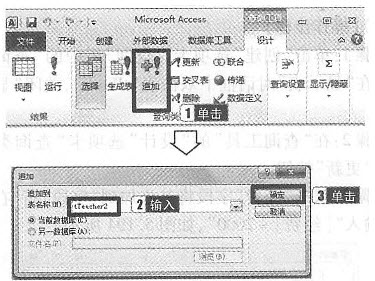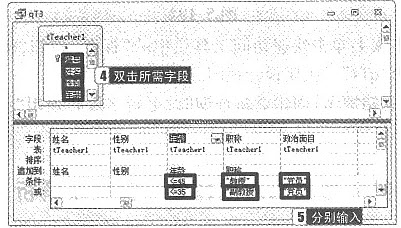在考生文件夹下有一个数据库文件“samp2.accdb”,其中存在两个已经设计好的表对象“tTeacher1”和“tTeacher2”以及一个宏对象“mTest”。请按以下要求完成设计。
创建一个查询,将“tTeacher1”表中年龄小于等于45的党员教授或年龄小于等于35的党员副教授记录追加到“fTeacher2”表的相应字段中,将查询命名为“qT3”。
参考答案:
步骤1:单击“创建”选项卡下“查询”组中的“查询设计”按钮,打开“显示表”对话框。在“显示表”对话框中双击表“tTacher1”,关闭“显示表”对话框。
步骤2:单击“查询工具”的“设计”选项卡“查询类型”组中的“追加”按钮,在弹出的对话框中输入“tTeacher2”,单击“确定”按钮,如图所示。

步骤3:分别双击“编号”、“姓名”、“性别”、“年龄”、“职称”和“政治面目”字段。
步骤4:在“年龄”、“职称”和“政治面目”字段的“条件”行分别输入“<=45”、“教授”和“党员”,在“或”行分别输入“<=35”、“副教授”和“党员”,如图所示。

步骤5:单击“查询工具”的“设计”选项卡“结果”组的“运行”按钮,在弹出的对话框中单击“是”按钮,如图所示。

步骤6:单击快速访问工具栏中的“保存”按钮 ,将查询保存为“qT3”。关闭设计视图。
,将查询保存为“qT3”。关闭设计视图。
